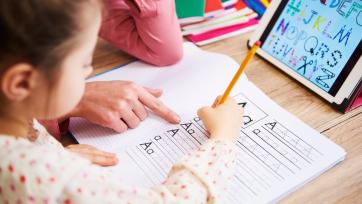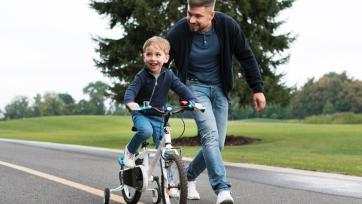As parents and caregivers, one of our greatest concerns is the safety of our children. Knowing what to do if they get lost is an essential part of their safety education. In this article, we'll explore the proactive steps you can take to teach your kids what to do in such situations.

From establishing a family safety plan to teaching basic personal details, identifying safe strangers and places, creating a "lost kit," and engaging in role-playing scenarios, these measures empower your children with the knowledge and confidence to navigate the unexpected safely.
Establishing A Safety Plan
In today's world, teaching your kids what to do if they get lost is an essential part of their safety education. To begin, establish a family safety plan that encompasses various scenarios. Explain the importance of listening to their instincts and following your guidelines. It's crucial to strike a balance between caution and not instilling unnecessary fear.
Encourage open communication within the family so your children feel comfortable sharing their concerns and experiences. Frequently review and update the safe plan to adapt to changing circumstances or your child's growing independence. By establishing a safety plan, you provide a framework that empowers your children with the knowledge and confidence to handle unforeseen situations.
Teaching Basic Personal Information
Children should have certain essential information at their fingertips. Teach them their full name, parents' names, home address, and at least one contact number. Depending on your child's age, you can use mnemonic tricks or songs to help them remember this information.
However, emphasize that this information is private and should only be shared with trusted adults. Role-play scenarios where they may need to share this information and reinforce the idea that it's okay to ask for help from the right people. By instilling this knowledge, you equip your child with a valuable tool for self-identification and communication in case they get lost.
Identifying Safe Strangers And Safe Places
Teaching your children about safe strangers and safe places is another critical aspect of their safety education. Safe strangers can include police officers, security personnel, teachers, or parents with children. Explain that these individuals are there to help and can be approached in emergencies. Emphasize that they can recognize safe strangers by their uniforms or badges.
Additionally, teach your children about safe places, such as stores, schools, or other public areas, where they can seek assistance if they get separated from you. Encourage them to identify these locations when you're out together, reinforcing the idea that these are reliable points of help and safety.
Creating A "lost Kit"
A "lost kit" is a simple but effective tool to empower your child in case they get separated from you. It can consist of a laminated card with their name, contact information, and any vital medical details. Include a whistle and a small flashlight, both of which can be handy in drawing attention or providing light if they find themselves in a dark or unfamiliar place.
Stress that this kit is for emergencies only and should be used responsibly. Teach your child how to carry it discreetly and explain that it's a tool to help them find their way back to you or get assistance when needed. By creating this kit together, you involve your child in their safety preparation.
Role-playing Scenarios
Role-playing is an excellent way to prepare your kids for real-life situations. Simulate scenarios where they might get lost, emphasizing the importance of staying calm and following the safety plan. Practice what to say to a safe stranger or how to find a safe place. Reassure them that these exercises are not meant to scare them but to empower them with the knowledge of what to do in unfamiliar situations.
As you role-play, encourage your child to ask questions and express their feelings. Use these moments to reinforce the safety plan, personal information, and the concept of safe strangers and places. Regular practice can build their confidence and readiness for handling unexpected situations.
When Is The Right Age To Start Teaching Kids What To Do If They Get Lost?
It's best to begin teaching these safety measures as soon as your child is old enough to understand basic concepts, typically around 3 to 4 years old. Adapt the lessons to their age and maturity level.
How Can I Teach My Child To Memorize Important Information Like Contact Numbers?
Mnemonic devices, songs, or making a game out of learning can be effective ways to help your child remember essential information. Make it fun and engaging.
Should I Discuss Potential Dangers With My Child, And Won't It Scare Them?
It's important to strike a balance. Age-appropriate discussions about safety should focus on empowerment and preparedness rather than creating fear. Use simple language and provide reassurance.
What If My Child Is Too Young To Carry A "lost Kit"?
For very young children, parents can carry a laminated card with emergency contact information and teach them the basics of finding a safe stranger or place.
How Can I Ensure My Child Stays Calm In A Stressful Situation?
Role-playing and gentle reassurance can help children practice staying calm. Encourage them to take deep breaths and remind them that you're always there to help and reunite with them.
Conclusion
Empowering your children with knowledge about what to do if they get lost is a crucial aspect of their safety and confidence in navigating the world. Establishing a safety plan, teaching essential information, identifying safe strangers and places, creating a "lost kit," and engaging in role-playing scenarios are all valuable steps. While the goal is readiness, it's essential to maintain a balance between caution and instilling fear. By taking these proactive measures, you equip your children with the skills and confidence they need to stay safe in unfamiliar situations.



